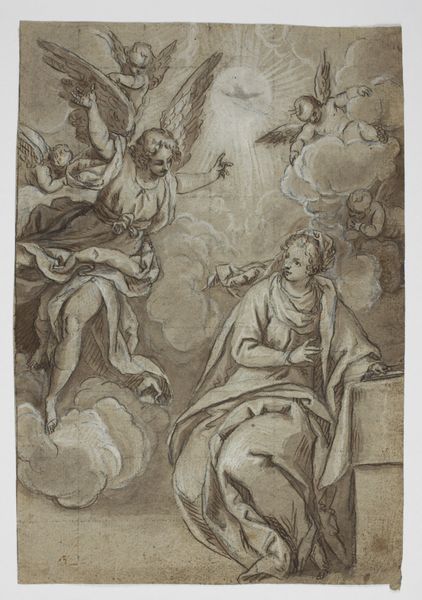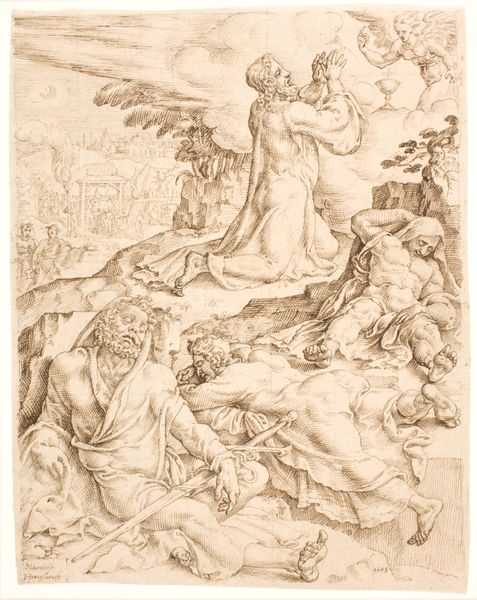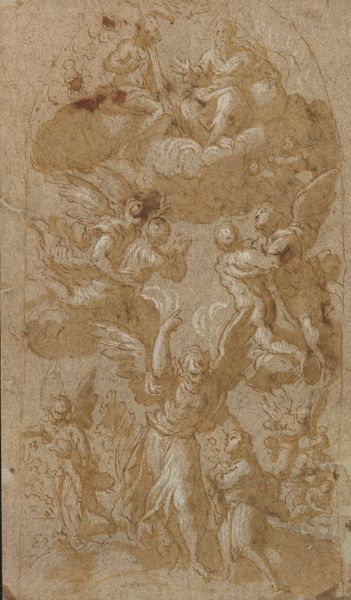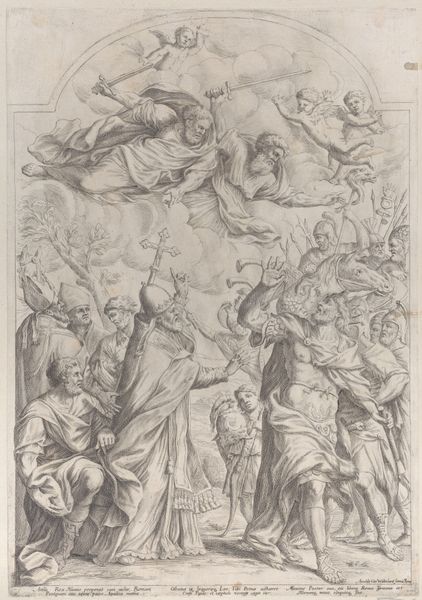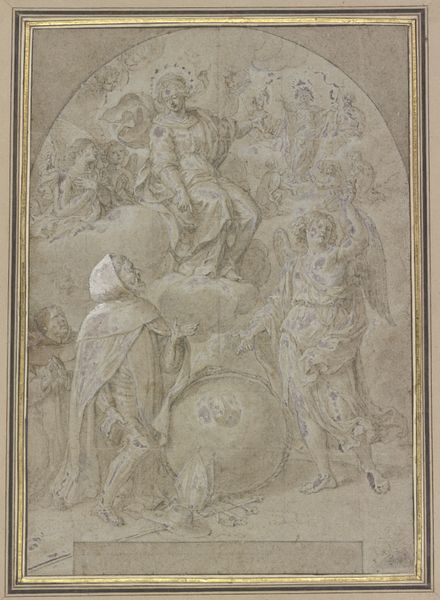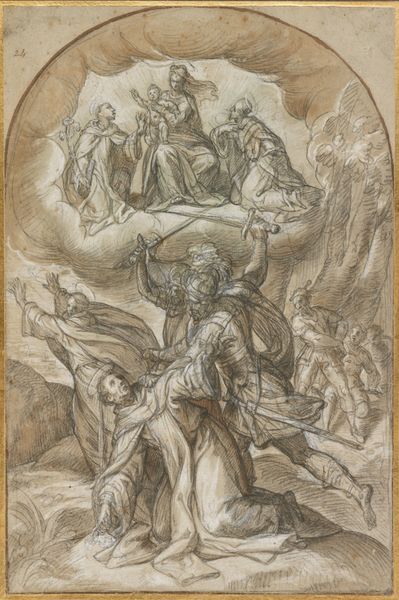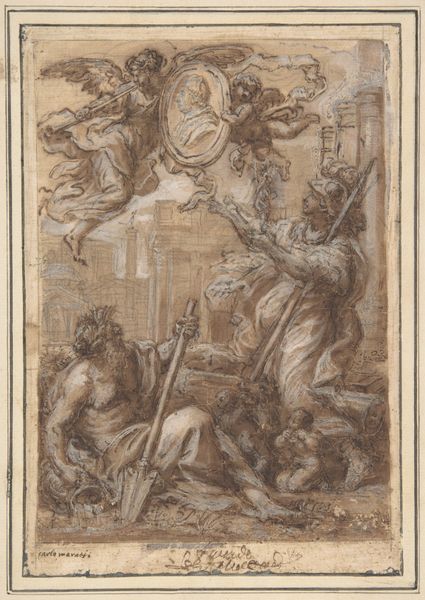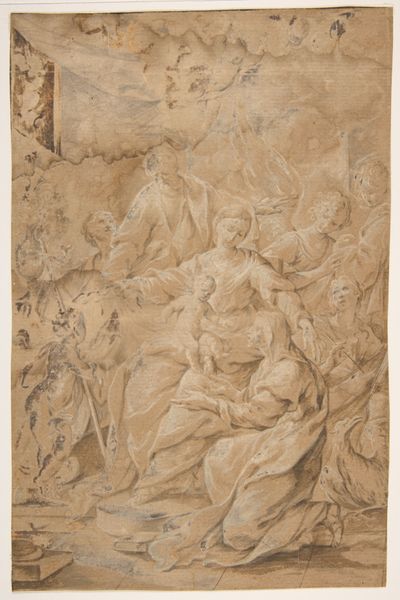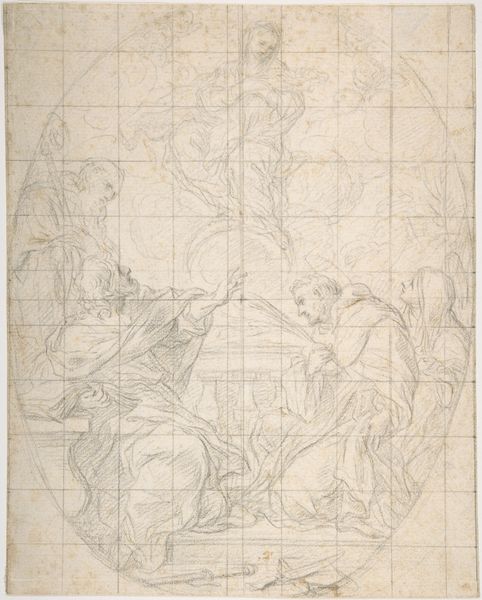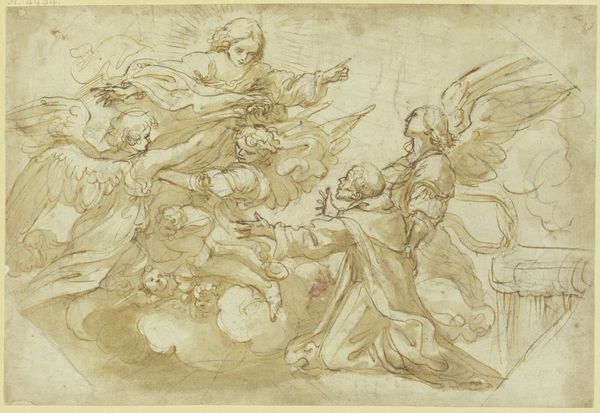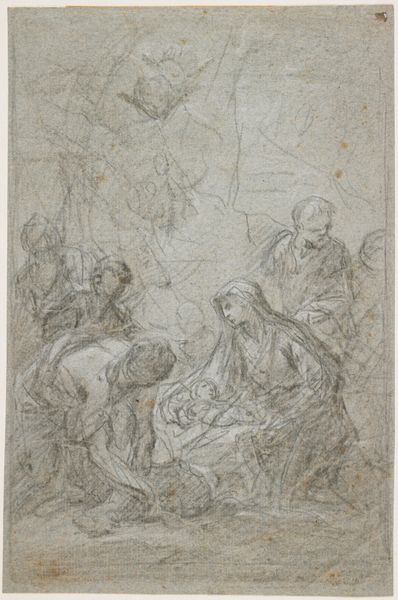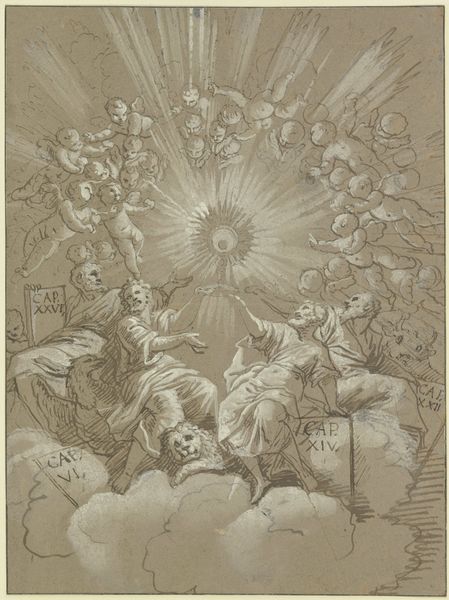
drawing, print, gouache, paper, ink, chalk, graphite, charcoal, black-chalk
#
portrait
#
drawing
# print
#
gouache
#
charcoal drawing
#
figuration
#
paper
#
11_renaissance
#
ink
#
chalk
#
graphite
#
charcoal
#
history-painting
#
academic-art
#
black-chalk
Dimensions: 522 × 365 mm
Copyright: Public Domain
Editor: Looking at Francesco Campora's "Vision of a Pope," created sometime in the Renaissance, you immediately notice the varied application of ink, charcoal, chalk, graphite, and gouache. It appears to be a study, perhaps a preliminary sketch for a larger work. The grid lines are clearly visible, adding a layer of almost industrial preparation. What do you notice in terms of the social and material production evident in this drawing? Curator: Well, let's consider the social implications of materials used, from chalk and charcoal to the very paper itself. These weren’t simply neutral elements; access to these resources, the quality, and even the skill required to manipulate them, reflected a distinct social hierarchy and an economic system of artistic patronage. This drawing's purpose would then depend on accessibility and funding of said materials. Note also that the medium – paper, with its grid – hints at an industrialized production. How do the visible under-drawings and the grid challenge our romantic notion of the artist's "vision"? Editor: That's fascinating. I never considered the materials themselves as signifiers of socio-economic status in the Renaissance. Does the clear depiction of the grid and varied use of media also speak to a breaking down of high art and craft traditions, with labour at the center? Curator: Precisely. This image reveals the art-making process; a breakdown that brings manual labour, usually invisible in the 'finished' artwork, to the foreground. Instead of solely focusing on Campora's artistic genius or divine inspiration, we begin to see him also as a technician, an artisan employing specific material strategies available to him due to access and funding to bring about this representation. In doing so we are reminded of all of the labourers involved in delivering to Campora the materials in the first place. Editor: It's interesting how examining the physical properties and the processes behind creating the piece leads to a whole new appreciation – understanding not just *what* is represented, but *how* and *why*. Curator: Yes, and recognizing the convergence of Campora's vision of labor practices, materials, economic circumstance, and cultural expectation and history.
Comments
No comments
Be the first to comment and join the conversation on the ultimate creative platform.
